
History of Gazebos: Who Invented the Gazebo?
History of Gazebos: Who Invented the Gazebo? Published October 6th, 2022 by Allen Campbell Let’s talk about the history of gazebos. Who invented the gazebo?
Published October 7th, 2022 by Allen Campbell
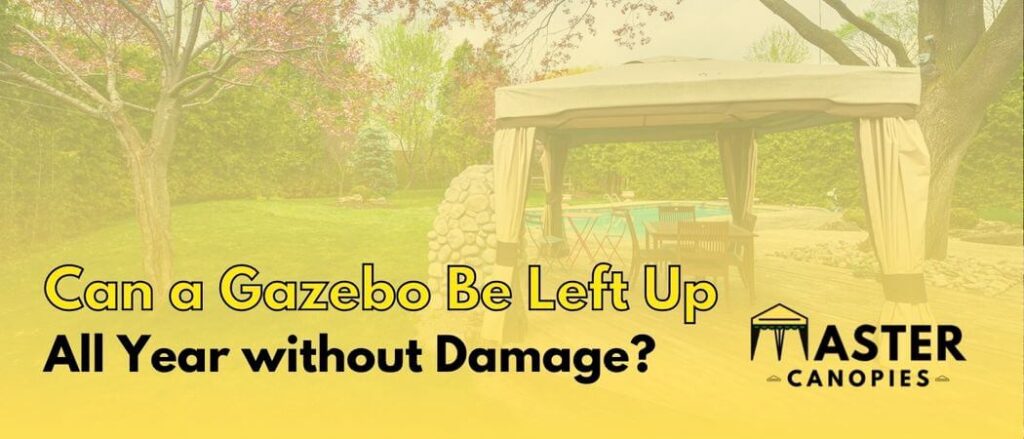
It’s no secret that gazebos are a popular addition to any backyard. Not only do gazeboes provide shade and shelter from the elements, but they also make perfect places to relax or entertain. But what about leaving your gazebo up all year round? Is that something that can be done without damaging the structure?
Yes, it is possible to leave your gazebo up all year, but it always depends on the type of gazebo and the roofing that you have. So, in this article, I’ll go over some of the things you need to keep in mind if you’re thinking about leaving your gazebo up all year.

There are many Hard Top Gazebos on the market which includes those made from wood, vinyl, or metal frame. These all have one thing in common, however, and that is a solid roof.
This is important because it means that there is no way for water or snow to get into the structure, which could cause damage. Now, let’s know whether these materials can take the brunt of the elements all year long.
First of all, metal gazebos are a great option if you’re looking for something that is durable and low maintenance. Leaving it up all year is definitely an option, but it’s important to check on it every once in a while to make sure that everything is still in good condition.
You should also apply a rust protector to the metal so that it doesn’t start to corrode over time. And if you live in an area with a lot of rain, it’s important to check on the gazebo more often – at least every 3 months during hot weather seasons. Even if you find that the metal has started to rust, you can usually remove it with some steel wool.
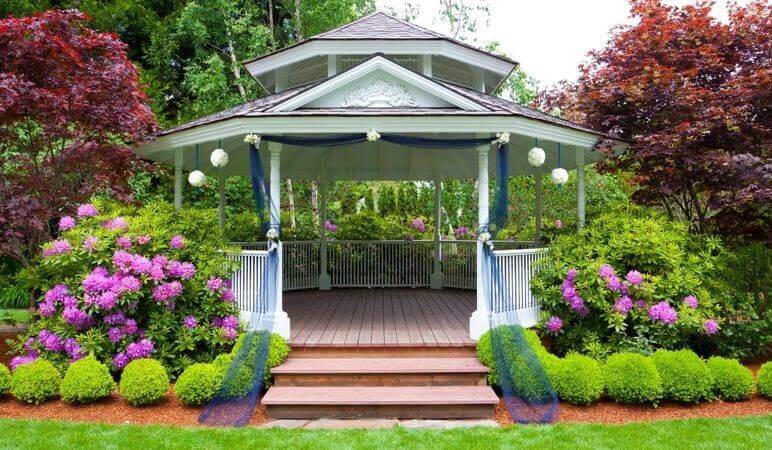
You don’t have to worry if you have a treated wood or composite wood gazebo. These materials are actually quite resistant to the elements and can last for many years without rotting or decaying. In fact, many people choose these types of gazebos because they’re worried about leaving a metal one up all year.
The treated wood is considered to be more durable than the untreated wood, so it’s definitely the better choice if you’re looking for a gazebo that will last for many years. Additionally, you won’t have to stress over rust or corrosion. Even the maintenance for these types of gazebos is quite low, so you can just sit back and enjoy your time in the backyard.
If you’re looking for something that will last a long time, pressure-treated wood is the way to go. It is processed with chemicals that make it more resistant to rot, insects, and water damage. The use of safe chemicals extends the life of pressure-treated wood, making it a great investment for your gazebo.
You can also try water or oil-based sealants to make your gazebo more durable. Applying sealant is a long task, but it’s worth it if you have small furniture and wood decorations that you don’t want to move every time it rains. So, I would recommend going with the treated wood option to have a durable and low-maintenance gazebo in your backyard.
No matter how you look at it, untreated wood is not going to last as long as the other materials. It’s simply not made to withstand the elements like the others are. So, if you’re looking for a gazebo that you can leave up all year, I would recommend avoiding untreated wood.
The only time I would recommend using it is if you’re going to be using the gazebo for a short period of time, such as during the summer. However, even then, you should be prepared to do some maintenance on it, such as painting or staining it every year.
If you’re looking for something that will last a while and is low-maintenance, the Vinyl Gazebos are a great option. Just like the metal gazebos, they’re also resistant to water and snow. It’s actually quite simple to keep them up all year if you wish. The only thing you should be concerned about is the wind.
Vinyl gazebos are not as heavy as metal ones, so they can be blown over if there’s a strong gust of wind. Additionally, you can customize the vinyl gazebos to better match your backyard aesthetics. You will find a vinyl gazebo to be an expensive investment as compared to wood, but it’s worth it in the long run because of its durability.
The fabric gazebos are not meant to be left up all year, but if you live in a warm climate and don’t mind doing some maintenance, it can be done. Just make sure that you clean the gazebo regularly and that you apply water repellent to the fabric.
So, if you’re willing to put in the work, a fabric gazebo can be left up all year round but only in warm climates. In my opinion, it’s not worth the hassle and you’re better off just getting a gazebo made of a more durable material like metal, vinyl, or treated wood.
No matter which gazebo you buy, it will require some upkeep. Whether it’s cleaning or coating it, keeping your gazebo in good shape is critical for its longevity. With the right care, your gazebo can be an enjoyable addition to your backyard for many years to come.
I don’t think it’s wise to leave a portable gazebo up all year. These gazebos are not meant to be left up for extended periods of time and they’re not very durable. If you live in an area with severe weather, I would recommend taking the gazebo down when bad weather is expected.
It is because they’re not very secure and can be easily blown over or damaged in high winds. These gazebos are also often made of fabric, which is not very durable and can fade or tear over time. So, if you’re looking for a gazebo that you can leave up all year, I would not recommend a temporary gazebo.
So, can a gazebo be left up all year without damage? In most cases, the answer is yes if you are using the hardtop roof gazebos which include metal, vinyl, or treated wood. These gazebos can withstand the elements and don’t require a lot of maintenance.
However, if you’re using a fabric gazebo or a temporary/portable gazebo, I would not recommend leaving it up all year. These types of gazebos are not as durable and can be easily damaged in severe weather. So, if you want a gazebo that you can leave up all year without worry, I would recommend going with metal, vinyl, or treated wood gazebo.
While soft top gazebos are primarily designed for use in the spring and summer months, there is no reason why they can’t be used in the winter as well. With a few simple adaptations, you can turn your gazebo into a cozy winter retreat.
First, make sure that the frame of your gazebo is sturdy enough to withstand heavy snowfall. If necessary, reinforce the frame with additional supports. Next, replace the canopy with one made of heavy-duty fabric that will provide insulation and protect against the elements. Finally, add a few heaters to keep things warm and toasty.
As anyone who has ever owned a steel gazebo knows, they are durable and long-lasting. Steel is a very durable material that can withstand a great deal of abuse. However, it is also susceptible to rust. Rust is a form of corrosion that happens to steel when it’s exposed to oxygen and moisture.
Over time, rust can cause the steel to weaken and break down. For this reason, it is important to take steps to prevent rust from forming on your steel gazebo. If you live in an area with high humidity or frequent rainstorms, you may want to consider adding a coat of paint or sealant to your gazebo.
This will help to keep the steel rust-free by preventing rust from developing. With proper care, your steel gazebo will be enjoyed for many years to come.
A cedar gazebo can provide a beautiful and functional addition to your backyard for many years. But how long will it last? Generally, a cedar gazebo will last 10-15 years with proper care and maintenance. Cedar is the best wood to use for outdoor structures because it doesn’t decay or get eaten by insects.
However, cedar is not immune to the effects of weathering. Sunlight and moisture can cause the wood to fade and crack over time. To prolong the life of your gazebo, be sure to apply a fresh coat of sealer or stain every few years.

Allen is a full time writer at Mastercanopies.com and enjoys traveling around the United States and exploring nature. He enjoys writing about canopies as he believes they are extremely crucial in having a successful camping trip whether it be a trip to the beach, mountains, or the open plains.

History of Gazebos: Who Invented the Gazebo? Published October 6th, 2022 by Allen Campbell Let’s talk about the history of gazebos. Who invented the gazebo?
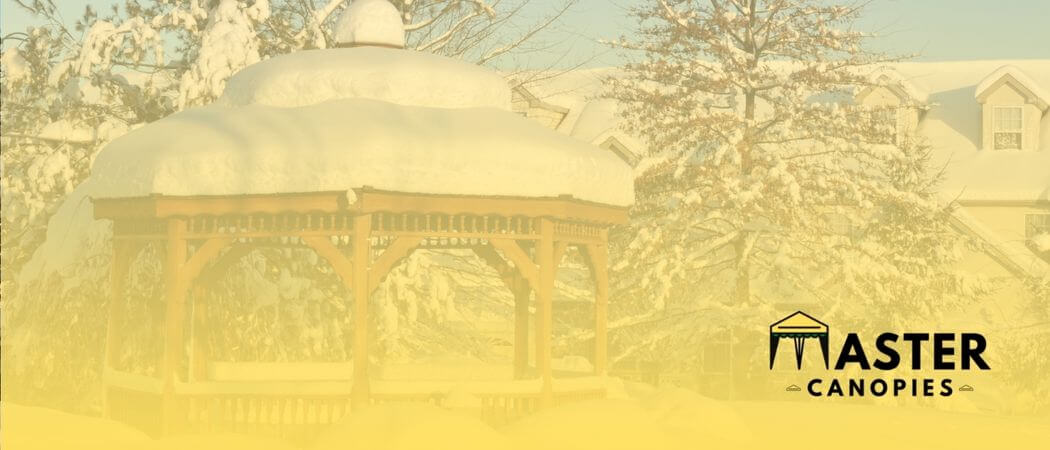
Best Gazebos for Winter: Top Picks Published October 5th, 2022 by Allen Campbell Although the thought of winter may send shivers down your spine, it

How to Set Up a Gazebo with Netting: Put Netting on Your Gazebo Published August 30th, 2022 by Allen Campbell Summer is in full swing,
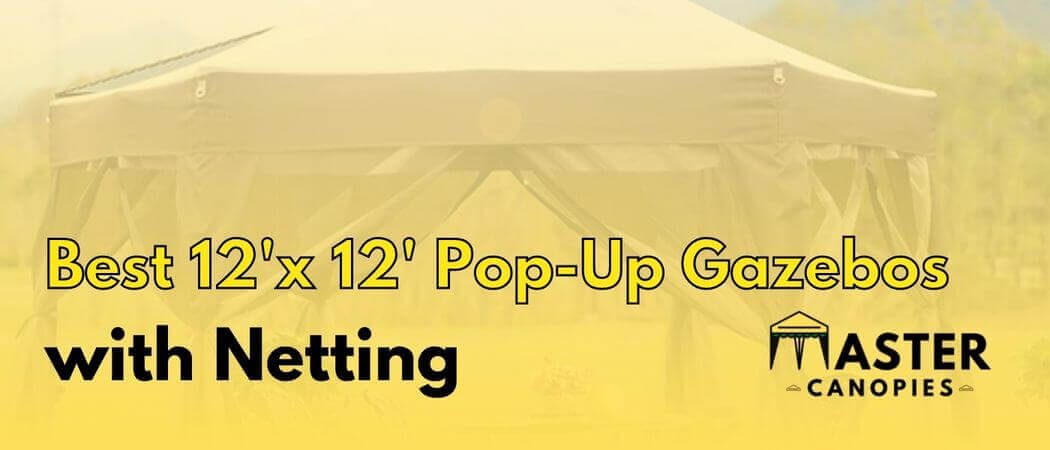
Best 12’x 12′ Pop-Up Gazebos with Netting Published August 29th, 2022 by Allen Campbell Looking for the best 12×12 pop-up gazebos with netting? You’ve come
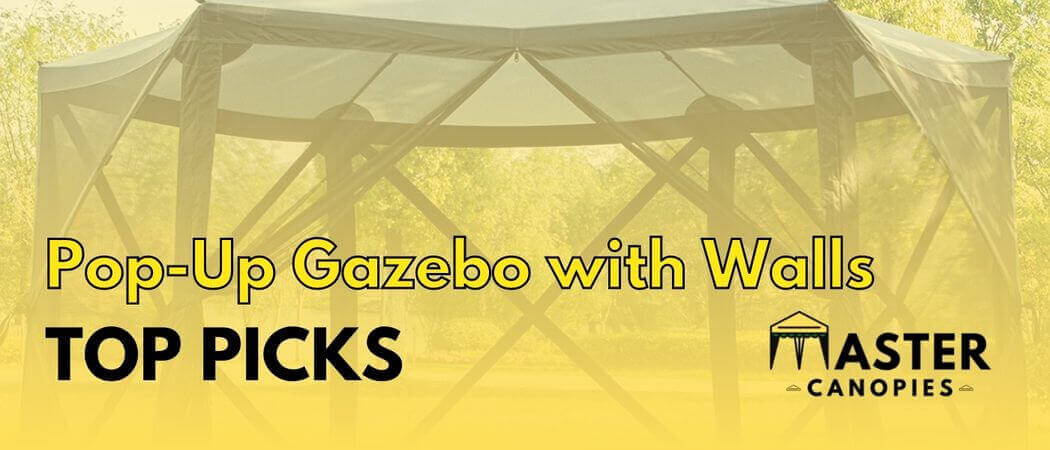
Best Pop-Up Gazebos with Walls: TOP PICKS Published August 25th, 2022 by Allen Campbell A gazebo is a great way to add some extra living

Will Gazebos Get Blown Away? How to Secure Your Gazebo Tent Published August 12th, 2022 by Allen Campbell Gazebos are a popular addition to yards

How Much are Gazebos? Gazebo Costs: Custom & Premade Prices Published August 12th, 2022 by Allen Campbell Making a gazebo tent is a great way
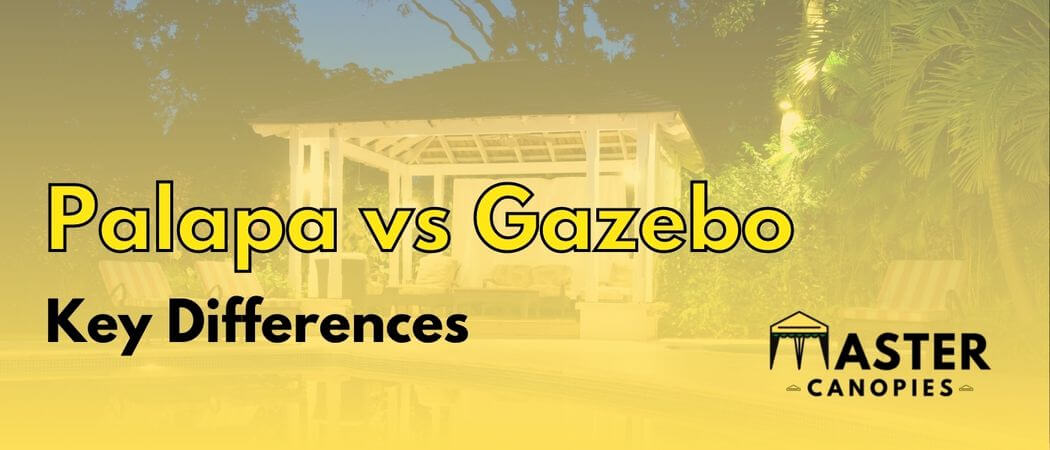
Palapa vs Gazebo? What are the Differences? Published August 4th, 2022 by Allen Campbell Whether you’re looking to add some extra shade and relaxation to

How Much Wind Can a Canopy Take? Published June 1st, 2022 by Allen Campbell When you need a little additional cover, a canopy tent might

Master Canopies is here to bring you the best canopies for the outdoors so that you can enjoy the fresh air without the gleaming and burning light of the sun.

Master Canopies is here to bring you the best canopies for the outdoors so that you can enjoy the fresh air without the gleaming and burning light of the sun. As an Amazon Associate, we earn from qualifying purchases.